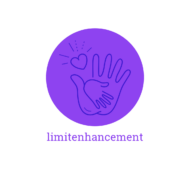Dyslexia affects millions of people worldwide, impacting their ability to read, write, and process language. Fortunately, numerous effective treatment techniques have been developed to help individuals with dyslexia overcome their challenges and thrive academically and professionally. The most effective dyslexia treatment techniques focus on multisensory, structured, and systematic approaches that target specific areas of difficulty.
Early diagnosis and intervention are crucial for successful dyslexia treatment. A comprehensive evaluation by qualified professionals helps identify the individual’s strengths and weaknesses, allowing for tailored interventions. These may include specialized reading programs, phonics instruction, and strategies to improve phonological awareness.
For dyslexia treatment for kids, methods that emphasize explicit instruction in phonemic awareness, phonics, fluency, vocabulary, and comprehension skills can be particularly effective. Assistive technologies and accommodations also play a vital role in supporting individuals with dyslexia, enabling them to access information and express their knowledge more effectively. This article provides information and should not replace professional advice; please consult a medical professional for additional help.
Key Takeaways
- Early diagnosis and intervention are crucial for effective dyslexia treatment.
- Multisensory, structured approaches target specific areas of difficulty in reading and language processing.
- Specialized programs, assistive technologies, and accommodations support individuals with dyslexia in academic and professional settings.
Diagnosis and Assessment
Proper diagnosis of dyslexia involves a comprehensive evaluation process. This typically includes initial screening, formal testing, and specialist assessments to pinpoint the specific nature and severity of reading difficulties.
Understanding Dyslexia
Dyslexia is a specific learning disorder that affects reading, writing, and spelling skills. It’s characterized by difficulties with accurate word recognition, poor decoding abilities, and spelling problems.

Developmental dyslexia is the most common form, typically identified in childhood. It’s important to recognize that dyslexia is not related to intelligence or lack of educational opportunities.
Early identification is crucial for effective intervention. Signs may appear as early as preschool age, but dyslexia is often diagnosed around first or second grade when formal reading instruction begins.
Initial Evaluation and Testing
The first step in diagnosing dyslexia usually involves screening tests conducted at school. These may include:
- Reading assessments
- Spelling tests
- Writing samples
- Phonological awareness tasks
A child’s medical history and family background are also considered, as dyslexia can have genetic components.
If screening suggests potential dyslexia, more comprehensive testing is recommended. This may involve standardized tests that measure:
- Reading accuracy and fluency
- Phonological processing skills
- Vocabulary and comprehension
- Cognitive abilities
Further Assessment by Specialists
For a definitive diagnosis, a thorough evaluation by specialists is necessary. This may include:
- Educational psychologists
- Neuropsychologists
- Speech-language pathologists
These professionals use a battery of formal tests to assess various aspects of reading, language, and cognitive skills. They evaluate:
- Phonemic awareness
- Rapid naming abilities
- Working memory
- Processing speed
The assessment also considers the child’s developmental history, educational experiences, and any co-existing conditions like ADHD.
Results from these evaluations help create a detailed profile of the individual’s strengths and weaknesses, guiding the development of tailored intervention strategies.
Evidence-Based Treatment Approaches
Effective dyslexia treatment relies on scientifically validated methods tailored to individual needs. These approaches focus on building foundational literacy skills through structured programs, personalized support, and practical accommodations.
Structured Literacy Programs
Structured literacy programs form the cornerstone of evidence-based dyslexia treatment. The Orton-Gillingham approach is widely recognized for its effectiveness. This method employs multisensory techniques to teach reading and writing skills.
Systematic phonics instruction is a key component. Students learn letter-sound relationships in a logical sequence. This helps them decode unfamiliar words and improves spelling abilities.
Phonemic awareness exercises develop the ability to identify and manipulate individual sounds in spoken words. These skills are crucial for reading and writing success.
Programs also target sight word recognition, fluency, and comprehension. Instruction is explicit, cumulative, and intensive to ensure mastery of each concept before moving on.
Individualized Support and Tutoring
One-on-one tutoring provides targeted assistance for students with dyslexia. Trained tutors assess each student’s specific strengths and weaknesses to create personalized learning plans.
Sessions typically focus on:
- Alphabet knowledge
- Phonics skills
- Spelling strategies
- Reading fluency
- Comprehension techniques

Tutors use multisensory methods to reinforce learning. This might include tracing letters in sand, using manipulatives, or incorporating movement into lessons.
Regular progress monitoring allows tutors to adjust instruction as needed. This ensures students receive the most effective support for their evolving needs.
Accommodations and Strategies
Practical accommodations help dyslexic students succeed in academic settings. These may include:
- Extended time for tests and assignments
- Text-to-speech software
- Audiobooks
- Graphic organizers for writing tasks
- Use of spell-checkers and word-prediction tools
Students also learn compensatory strategies to work around their challenges. These might involve active reading techniques, note-taking methods, or memory aids.
Assistive technology plays a crucial role. Apps and software designed for dyslexic learners can significantly improve reading speed and comprehension.
Teachers and parents work together to implement these accommodations consistently across different environments. This comprehensive approach supports the student’s overall academic progress.
Conclusion
Effective dyslexia treatment requires individualized, structured approaches tailored to each person’s specific needs. Early intervention and consistent practice are crucial for improving reading and language skills. While no single technique works for everyone, multisensory methods and targeted phonics instruction have shown promising results for many individuals with dyslexia. Ongoing research continues to refine our understanding of dyslexia and enhance treatment strategies.

